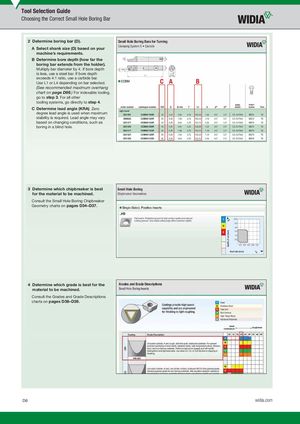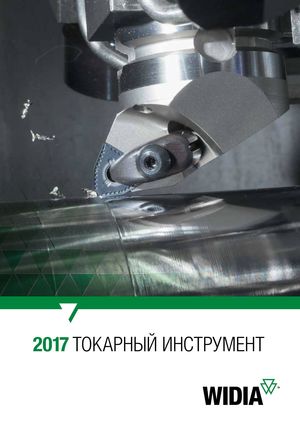Общий каталог Widia 2017 - страница 376
Навигация
- Table of Contents
- Turning
- Turning • ISO Inserts
- Turning • Tools for External Turning and Internal Boring
- Turning • Tools for External Turning and Internal Boring
- Turning • Tools for Small Hole Boring
- com E1Turning • Grooving and Cut-Off
- Turning • Threading
- Indexable Milling
- Indexable Milling • Face Mills
- Indexable Milling • Chamfer Mills
- Indexable Milling • 90° Shoulder Mills
- Indexable Milling • Helical Mills
- Indexable Milling • Slotting Mills
- Indexable Milling • Copy Mills
- Solid End Milling
- Solid End Milling • High-Performance Solid Carbide End Mills
- Solid End Milling • General Purpose Solid Carbide End Mills
- Solid End Milling • High-Performance High-Speed Steel (HSS-E/PM)
- Solid End Milling • Burs
- Holemaking
- Holemaking • High-Performance Solid Carbide Drills
- Holemaking • Modular Drills
- Holemaking • Indexable Drills
- Holemaking • Modular Drills
- Holemaking • Indexable Drills
- Holemaking • Hole Finishing
- Tapping
- Tapping Portfolio
- Index by Order Number
- Index by Catalogue Number
- Global Contacts
- Informational Icons Guide
- Material Overview • DIN

Tool Selection Guide Choosing the Correct Small Hole Boring Bar 2 Determine boring bar (D). A Select shank size (D) based on your machine’s requirements. B Determine bore depth (how far the boring bar extends from the holder). Multiply bar diameter by 4. If bore depth is less, use a steel bar. If bore depth exceeds 4:1 ratio, use a carbide bar.Use L1 or L4 depending on bar selected.CAB (See recommended maximum overhang chart on page D86.) For indexable tooling, go to step 3. For all other tooling systems, go directly to step 4. C Determine lead angle (KRA). Zero degree lead angle is used when maximum stability is required. Lead angle may vary based on changing conditions, such as boring in a blind hole. 3 Determine which chipbreaker is best for the material to be machined. Consult the Small Hole Boring Chipbreaker Geometry charts on pages D34–D37. 4 Determine which grade is best for the material to be machined. Consult the Grades and Grade Descriptions charts on pages D38–D39. D6 widia.com
 Каталог Widia токарный инструмент 2017
Каталог Widia токарный инструмент 2017 Каталог Widia трохоидальное фрезерование
Каталог Widia трохоидальное фрезерование Каталог Widia техническое руководство по разверткам
Каталог Widia техническое руководство по разверткам Каталог Widia фрезы со сменными пластинами 2016
Каталог Widia фрезы со сменными пластинами 2016 Каталог Widia достижения 2020
Каталог Widia достижения 2020